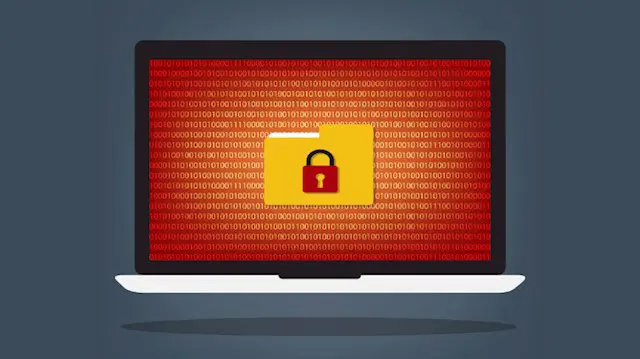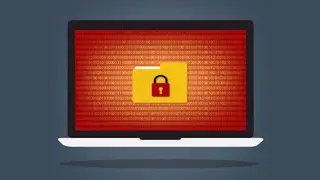
Learn Ethical Hacking From A-Z: Beginner To Expert Course
Learn how to become an elite ethical hacker and easily hack networks, computer systems, web apps and so much more...
Lunes Online Learning
Summary
- Reed courses certificate of completion - Free
Add to basket or enquire
Overview
-
Learn How To Become An Elite Ethical Hacker.
-
How To Setup A Hacking Lab.
-
How To Launch Attacks/Exploits Against Computers.
-
How To Start A Cybersecurity/Ethical Hacking Career.
-
How To Hack Into Wireless Networks.
-
How To Conduct Penetration Tests.
-
How To Bypass Antivirus.
-
The Fundamentals of Networking.
-
How To Remain Anonymous On The Internet.
-
The Fundamentals of Linux.
-
The Fundamentals of Bash.
-
How To Gather Website & App Data.
-
The Fundamentals of Python.
-
Maintaining Access To Exploited Computers.
-
Website & Web Application Hacking.
-
Mobile Phone Security Tips.
-
Where You Can Practice Hacking For Free.
-
Conducting Passive & Active Reconnaissance On A Network.
Certificates
Reed courses certificate of completion
Digital certificate - Included
Will be downloadable when all lectures have been completed
Curriculum
-
Course Introduction 54:40
-
Networking Basics 32:46
-
Setting Up Your Hacking Lab 44:49
-
Linux+Python+Bash+Powershell Basics 47:30
-
How to Remain Anonymous on the Web 21:52
-
How to Hack into WIFI 38:27
-
Passive & Active Reconnaissance (Information Gathering) 1:17:48
-
Launching Attakcs 1:43:25
-
Post Exploitation 1:08:36
-
Website & Web Application Hacking 1:40:19
-
Mobile Phone Hacking & Security 18:50
-
Getting Your Name Out There As A Hacker 1:00:35
-
How To Make Money As An Ethical Hacker 26:05
-
How To Start a Career In Cybersecurity 16:14
-
Course Resources 06:00
Course media
Description
This practical, hands-on course was created for newbies – that's to say, people with no prior training or knowledge in hacking and cybersecurity. The aim of this course is to give you the education not just to understand what black-hat hatters do and how, but also to learn exactly how to hack systems like a pro and win the cat and mouse game by securing systems like a professional security expert.
Blending practical work with solid theoretical training, we take you from the basics of ethical hacking through to mastery, giving you the training you need not just to hack, but also to secure against a hack.
While the theory is important, we understand that it can also be dry and uninspiring. For this reason, this course is packed with examples that you can follow. This practical focus starts from the beginning, where we will teach you about penetration testing and show you how to install the software required (Windows, Linux, and Mac OSX) and jump right into hacking.
Throughout, you will analyze and exploit various systems from regular websites through to sprawling networks, along with hacking servers and clients. More than just hacking, you'll also learn how to conduct efficient penetration testing techniques.
This approach gives you the foundational education that you need not just to hack any given system, but also to secure it, with each module covering both sides of the coin. The course covers six main areas:
1: LEARN THE FUNDAMENTALS NECESSARY TO BECOME A HACKER
This foundational section gives you a full introduction to the basics of networking systems – how they communicate and work – and is designed to give you the knowledge you need to succeed in this course.
-
BASICS OF NETWORKING: Networking can be an intimidating topic, but don’t worry! We break down only the necessary things that you need to know in regards to networking and teach you important networking fundamentals
-
SETTING UP A HACKING LAB: You can’t hack without a lab! We walk you step-by-step through the process of setting up your own hacking lab on your laptop or desktop computer!
-
LINUX + SCRIPTING BASICS: Hackers use Linux, which is an OS that the average person may have no experience with. We will go over Linux fundamentals so that you can easily navigate your way through Linux during this course. We also touch on a couple of scripting languages that are a MUST for any ethical hacker and teach you the basics of each one with practical examples.
-
HIDING YOUR IDENTITY ON THE WEB: If you are hacking on the internet, you need to learn how to remain anonymous. We will show you the tools and techniques that you can use to always remain anonymous and unknown on the internet.
2: LEARN HOW TO HACK NETWORKS
This section shows you how to test both wired and wireless systems. You will learn how to go from not having any access to a network to gaining access and being able to begin attacking systems on the network.
-
PRE-CONNECTION ATTACK: Not all attacks require you to be connected to the target or even know the password. Learn how to discover and manipulate devices connected to a network and gather information about your target
-
GAIN ACCESS TO NETWORKS: Learn how to use the information you have about your target to crack the key and get the access password. This section covers multiple protocols including WEP, WPA, and WPA2
-
POST-CONNECTION ATTACKS: With a key, you can now leverage powerful hacking techniques to get even more information. Learn how to see what users are doing on a network, inject code in pages, and more on wired and wireless networks
3: HOW TO GAIN ACCESS AND CONNECT TO NETWORKS
This section builds on the lessons learned in section one, showing you how you can get full control and hack into any computer system that you target.
-
SERVER-SIDE ATTACK: Discover how to harvest information about your targeted system – its OS, open ports, and installed services – without user interaction. Then use this information to exploit vulnerabilities and generate reports
-
CLIENT-SIDE ATTACK: Learn how to hack systems with no vulnerabilities by sneaking in with software updates or using backdoor trojan downloads. You’ll also learn the art of social engineering – or tricking people into giving you information
4: HOW TO LEVERAGE POST EXPLOITATION
This section shifts the focus on interacting with compromised systems. Now that you have gained access, you'll learn how you can exploit these systems.
-
ACCESS FILE SYSTEMS: All systems have a wealth of files that you can now manipulate with your access. Learn how to access these systems and how to read, write, upload, and even execute files
-
MAINTAIN ACCESS: Gaining access to a system and its files is only half of the battle. Learn how to maintain your access and frustrate efforts to secure it again so you can continue to exploit a system
-
SPY ON YOUR TARGET: Learn how to capture any keystrokes on a keyboard, turn on a computer webcam, take screenshots, and even take control of the system to attack, hack, and access third-party networks and systems
5: HOW TO HACK WEBSITES AND WEB APPS
In this section, you will learn more about how you can hack into websites and web applications using Kali Linux. You’ll also learn how web applications work – and how to find vulnerabilities within these applications for you to exploit.
-
How to scan websites/web applications for vulnerabilities to exploit
-
How to Brute Force into web applications
-
How to conduct SQL injection in web applications
-
How to conduct Cross Site Request Forgery (CSRF)
-
How to exploit File Inclusion Vulnerabilities
-
How to exploit File Upload Vulnerabilities
-
How to automate attacking web applications using various tools
-
How to prevent and secure websites & apps yourself
6: HOW TO MAKE MONEY, LAND A JOB & BUILD A BRAND AS A HACKER
In this section, you will learn how you can make money as an ethical hacker using a variety of methods. You’ll also learn how to build your personal brand and get your name out there as an Ethical Hacker so you can have employers and clients knocking at your door ready to hire you for your services. Then finally, you’ll learn how you can start a career in cybersecurity with some insider tips on what certifications to get and the best way to land a job.
This includes:
-
How to build an ethical hacker personal brand from scratch
-
How to get instant credibility and authority as a hacker
-
How to properly network and get others talking about you
-
How to make money using a variety of websites
-
How to get started freelancing as a hacker
-
How to get started consulting as a hacker
-
How to land a job as a cybersecurity professional
This course is comprehensive, showing you both sides of hacking. You will learn to think and operate like a hacker – and how to apply that knowledge as a cybersecurity expert to protect you and your clients' networks and systems. In taking this 'cat and mouse' approach, your rounded understanding will give your approach new depths and angles, revealing the paths you can take to effectively neutralize any threat.
Together with the emphasis on practical examples that you can follow in real life with live systems, you will also benefit from the excitement of hands-on learning. By experiencing precisely what it takes to hack into any given target system, you'll also learn that no one system is the same and that all approaches can be modified.
Who is this course for?
- This course is for anyone who has an interest in Cybersecurity or Ethical Hacking/Penetration Testing
- Anyone who wants to start a career as an Ethical Hacker or Penetration Tester but does not know where to start
Requirements
-
Basic IT/Computer Skills & Knowledge
-
Computer With At Least 8GB of RAM/Memory (Less is ok, but your computer may run slow!)
-
Wifi Hacking Section Only: USB Wireless Adapter (Link Provided In Course Resources)
-
You Do Not Need Any Prior Experience In Hacking Or Cybersecurity To Go Through This Course
Questions and answers
Lifetime access?
Answer:Hi there, yes course has lifetime access, thanks.
This was helpful.
Reviews
Currently there are no reviews for this course. Be the first to leave a review.
Legal information
This course is advertised on reed.co.uk by the Course Provider, whose terms and conditions apply. Purchases are made directly from the Course Provider, and as such, content and materials are supplied by the Course Provider directly. Reed is acting as agent and not reseller in relation to this course. Reed's only responsibility is to facilitate your payment for the course. It is your responsibility to review and agree to the Course Provider's terms and conditions and satisfy yourself as to the suitability of the course you intend to purchase. Reed will not have any responsibility for the content of the course and/or associated materials.


